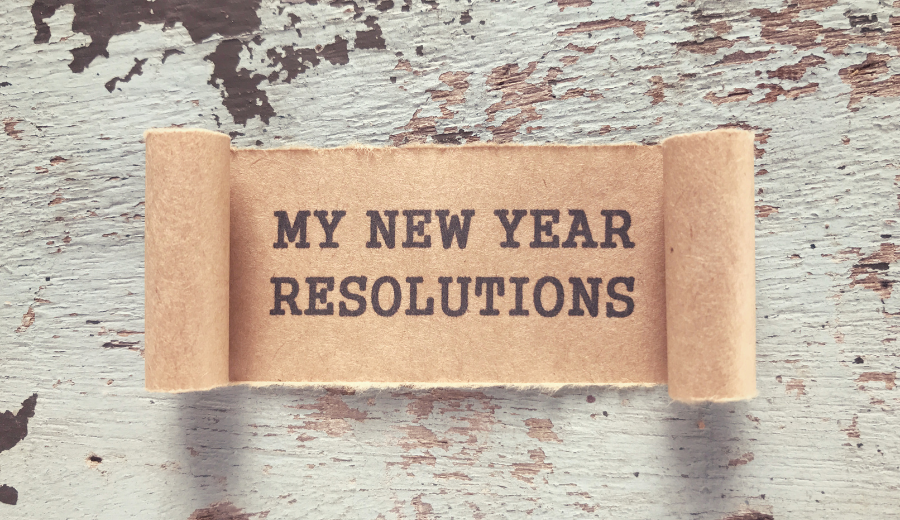In less than two weeks, it will be 2024. In your social circles, the “buzz” is probably already about New Year’s hopeful resolutions. Have you made any? According to the Statista Global Consumer Survey, the top resolutions for...

In less than two weeks, it will be 2024. In your social circles, the “buzz” is probably already about New Year’s hopeful resolutions. Have you made any? According to the Statista Global Consumer Survey, the top resolutions for the coming year are to exercise more, eat healthier, and lose weight. The resolution to deal with a substance use disorder, eating disorder, or mental health condition is potentially nestled within all three of the top behavioral changes.
A “resolution” is a commitment to change our behavior. But to accomplish any behavioral change in our lives, we must first understand that we are engaging in a process and not achieving a single event or goal. This process involves a series of shifts that have ups and downs. It takes endurance and commitment to begin the process of change. No wonder 80% of New Year’s resolutions fail by February! Let’s change that statistic. I want to share some perspectives with you on how humans make behavioral changes like resolutions or adjustments to our relationships and lives.
Hopeful Resolutions & Change
When it comes to a resolution for a new year, we often start strong and implement our changes with great gusto. And then our energy for those hopeful resolutions begins to wain as results are not produced as quickly as we wanted. We get discouraged and start to believe that a resolution isn’t going to be accomplished. But perhaps all that is needed is to apply a different perspective and a little strategy.

Understanding our Motivation
We must understand our motivation to change. We must also be ready, willing, and able to make the change we desire. To be “ready,” we need to have compared our desired change with other priorities in our life. For example, is this change one of the highest priorities I have in my life right now? To be “willing,” we want to ask, How much do I deeply desire to accomplish this change? What am I willing to give up or move to achieve this change? And to be “able” is to make change happen. Do I have the skills, knowledge, resources, and self-efficacy to follow up on this behavior change?
The three words “ready, willing, and able” are elements of our motivation—these elements of motivation shift throughout the PROCESS of change. Prochaska and DiClemente (1983) have researched and studied human behavior and have identified Stages of Change. Here is how they describe what humans go through to accomplish behavior changes.
Stages of Change:
PRECONTEMPLATION
A person still needs to consider change, perhaps unwilling or unable.
CONTEMPLATION
One is considering the possibility of change – there is ambivalence and uncertainty.
PREPARATION
A person is committed to and planning to make a change soon, considering ability and resources.
ACTION
A person is actively making steps toward change but is not yet stable in their change
MAINTENANCE
They have achieved the change and are applying new behaviors that maintain it.
RECURRENCE
A person has experienced a return of former behaviors and must now face the consequences and take next steps.

Change is not linear.
Sticking to Resolutions – the Change Process
According to Prochaska and DiClemente, the list above are the typical stages most people go through to accomplish change. However, change is not linear; people only sometimes move quickly from one step to the next. Instead, we tend to go back and forth between stages. Most often, we linger in the early stages of change.
Movement between the stages of change occurs when motivation (ready, willing, able) interacts with the dynamic aspects of change in real life. They also remind us that recurrence is a typical expectation at varied points in the change process. Because people usually wait to sustain behavior change. It does not mean a person has abandoned a commitment to change.
The Takeaway?
So, what is the big takeaway? As the facilitator of Sanford Behavioral Health’s Family Program, I help families deal with substance use disorders (SUD), co-occurring conditions, and the changes inherent in recovery. I tell them it is imperative to understand the change process and the various shifts that go into accomplishing and maintaining change. This information applies to the changes one desires to make towards loved ones with SUDs and the change process they are engaged in achieving. It also works for anyone embarking on change any time of year!
I hope you are on target with your New Year’s resolutions. And I wish you a Happy New Year with GUSTO!

The post Hopeful Resolutions – How to Make Behavioral Change Stick in 2024 appeared first on Sanford Behavioral Health.













